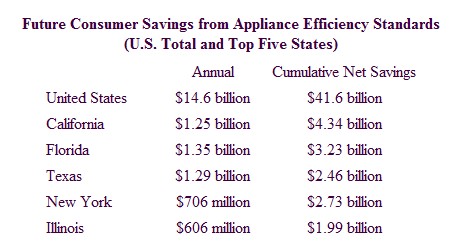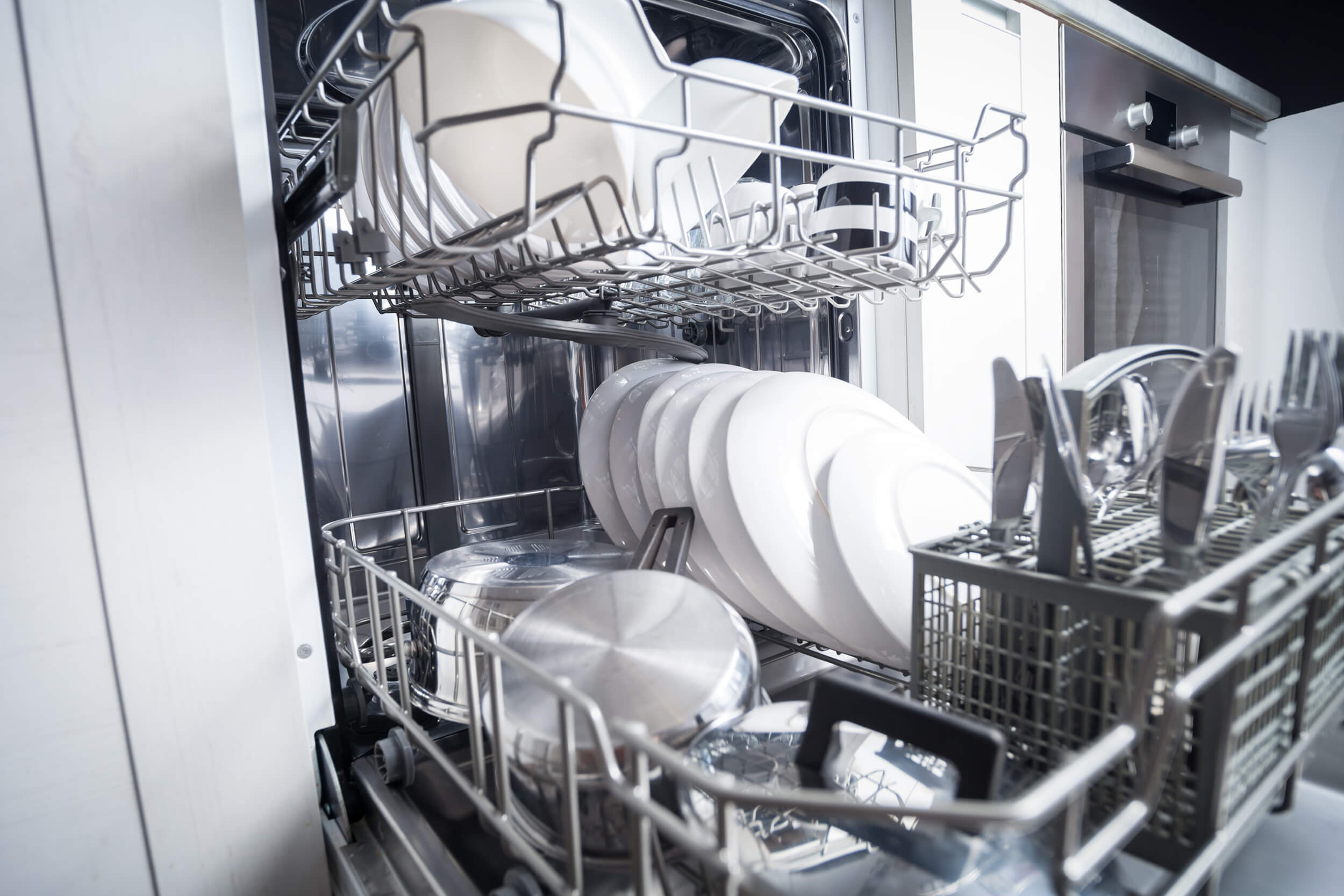FOR IMMEDIATE RELEASE
Tuesday, March 28, 2000
12:01 a.m., EST
CONTACTS:
Valerie Holford or Charles Longer, Fenton Communications, 202/822-5200
Bobbi Russell, EMS, 202/463-6670
New Report Urges Administration to Speed Changes of Outdated Rules; Giant Power Savings Would Protect Utility Grid, Air Quality
Swift adoption of long-awaited appliance efficiency standards would dramatically reduce U.S. energy demand, saving consumers $14 billion a year by 2020 — equal to more than one month's free electricity for every household — according to a new report released today by the Appliance Standards Awareness Project (ASAP).
While the U.S. Department of Energy continues to drag its feet, ASAP has recommended performance standards for DOE to implement that would have a dramatic impact on public health and the environment. The electricity savings would eliminate the need for 64 large power plants by 2010, and 180 plants by 2020. Improved efficiency would eliminate 31 million metric tons of carbon pollution each year, along with 90,000 metric tons of smog-producing nitrogen oxide and 350,000 metric tons of sulfur dioxide.
New rules for manufacturers would also help protect reliability of electric utility systems threatened by soaring electric demand. In addition, a new washing machine standard would reduce indoor household water use by 10 percent. Despite these dramatic benefits, the federal government is years behind the legally mandated schedule for issuing new efficiency rules for many appliances.
The report ranks energy, water and cost savings for each of the 50 states resulting from seven standards recommended by ASAP, and based on currently available technology. It is available online at www.standardsasap.org.
Products covered in the new study include water heaters, central air conditioners, clothes washers, fluorescent lighting ballasts, transformers, commercial air conditioning and commercial heating equipment.
"Outdated appliance standards are costing consumers hundreds of millions of dollars and are causing excess pollution," says Andrew deLaski, executive director of ASAP. "Updating the rules to reflect current technology levels will guarantee a basic, uniform level of product performance that saves consumers money and protects the environment."
Feds Are Way Behind Schedule
Congress established the national appliance efficiency program in 1987, creating one of the most effective tools for reducing U.S. energy use and air pollution. For example, refrigerators purchased next year will use 75 percent less energy than those purchased in the early 1970s. Standards already in place for more than a dozen products will save enough energy to supply 6.5 million households in 2000.
But the government's standard-setting process is running years behind schedule. For example, DOE has long since missed the legal deadlines for four of the categories recommended by ASAP. Rules for water heaters and fluorescent ballasts were due in 1992, central air conditioners in 1994 and washers in 1995. Long-standing problems at DOE were made worse in 1995 when a handful of manufacturers successfully lobbied for a one-year moratorium on new efficiency standards.
As a result, DOE has managed to set just two new efficiency standards in the last eight years: one for room air conditioners that takes effect in October and one for refrigerators and freezers that comes into effect in 2001. In its new report, ASAP proposes standards that could be adopted by DOE in categories the department has failed to act on.
On March 15th, 2000, DOE proposed standards for fluorescent ballasts — 8 years after the legal deadline — at the level suggested by the ASAP report. This is the first of four standards that DOE has committed to updating this year.
New Standards = Cleaner, Healthier Environment
Pollution reductions would have a dramatic impact on human health and the environment. An earlier study predicted that energy-related pollution savings from next year's refrigerator standards alone will prolong 500 lives each year. Total savings from the standards recommended by ASAP are two-and-a-half times greater than the refrigerator rule.
"Reduced pollution emissions from the existing and proposed efficiency standards are equal to 15 percent of the U.S. target for 2010," says Kalee Kreider of the National Environmental Trust. "Modernizing standards is the quickest, no-cost way to reduce global warming pollution while saving consumers' dollars."
New standards — especially for air conditioning — could be an important remedy for the increase in summertime power outages caused by heavy power demand. DOE recently accelerated the schedule for new central AC and heat pump standards in direct response to the increasing frequency of power failures caused by surging peak demand.
Rules Spark Innovation, Bring New Jobs to Appliance Industry
Efficiency standards have become a driving force for investment and innovation in the U.S. appliance industry. To meet the new refrigerator rules, for example, Maytag expanded its plant at Galesburg, Ill., increasing its permanent workforce to 2,400. Frigidaire and Whirlpool are similarly upgrading factories in Arkansas, Indiana, Michigan and South Carolina.
All three companies have improved both product design and manufacturing facilities well in advance of the anticipated washer standard, despite DOE delays. State of the art, American-made machines now use half the energy of typical current models.
More efficient machines frequently cost slightly more than older designs, but the price difference is quickly made up by savings on utility bills. Each dollar of increased purchase price yields more than two dollars in reduced operating costs, according to the report. For clothes washers, the payoff is nearly five to one.
Lower utility bills also free up money for other things, creating a ripple effect in the economy. DOE estimates that efficiency standards for washers, water heaters and fluorescent ballasts alone will generate 120,000 new jobs by 2020.
# # #
The Appliance Standards Awareness Project is dedicated to increasing understanding of and support for national appliance and equipment energy efficiency standards. ASAP is sponsored by leading environmental groups, consumer groups and state government and utilities.
The report, entitled Opportunity Knocks: Capturing Pollution Reductions and Consumer Savings from Updated Appliance Efficiency Standards, was prepared for ASAP by the American Council for an Energy-Efficient Economy.
The full report is available online at www.standardsasap.org.
FOR MORE INFORMATION, CONTACT:
Andrew deLaski, executive director,
Appliance Standards Awareness Project, 617/363-9470
Steve Nadel, report co-author and deputy director,
American Council for an Energy-Efficient Economy, 202/429-8873
Jennifer Thorne, report co-author and research associate,
American Councilfor an Energy-Efficient Economy, 202/429-8873
Kalee Kreider, climate campaign director,
National Environmental Trust, 202/887-8800 or 202/262-6553




